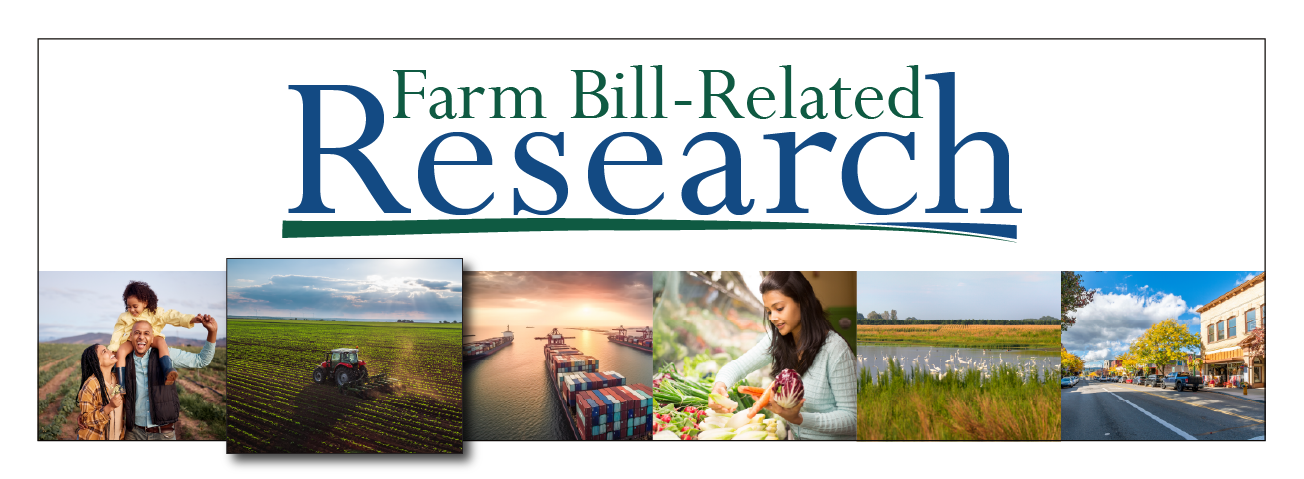
Falling Milk Prices Led to Record Program Payments for Dairy Producers in 2023
- by Brian Williams and Dylan Turner
- 9/25/2024
Fluctuations in milk prices and feed prices pose ongoing risks for dairy farmers. The difference between those two prices is known as the “milk margin.” When that margin narrows to a predetermined point because of falling milk prices, rising feed prices, or both, dairy producers receive financial protection through the Federal Dairy Margin Coverage program. Dairy farmers who sign up for the program, authorized under the 2018 Farm Bill, choose a coverage level ranging from $4.00 to $9.50 per hundredweight (100 pounds) of milk produced. If the margin falls in that range, the producers receive a payment according to the level they selected. In the first few years of the program, feed costs grew at a faster rate than milk prices, squeezing the milk margins. Subsequent payments to dairy producers trended upward, reaching highs in 2023.
The milk margin calculation, made bimonthly, is based on the difference between the U.S. all-milk price and a nationally estimated cost of feed that considers the prices of corn, soybean meal, and premium alfalfa hay. During the first 2 years of the program, feed costs remained relatively stable around $9.00 per hundredweight. At the same time, milk prices moved from $16.60 per hundredweight in early 2019 to $21.00 per hundredweight by the end of 2019 before falling to under $14.00 by May 2020 because of pandemic-related changes in demand and supply. A strong corn market began to drive the national feed cost higher toward the end of 2020 and through 2021. In early 2022, Russia’s war against Ukraine and the resulting uncertainty in international grain markets further drove up corn prices. Feed costs increased to $16.22 per hundredweight by August 2022.
While feed costs continued to grow in 2021 and into 2022, milk prices also rose, reaching record highs in 2022. The milk margin widened throughout the latter part of 2021 and most of 2022 (see chart below). In most months during 2022, the margin rose above the $9.50 threshold needed to trigger a payment. The wider margins led to an average annual dairy margin coverage payment of $4,675 per enrolled operation in 2022—the lowest average payment since the launch of the program, according to data reported by USDA, Farm Service Agency.
In early 2023, feed costs began to fall, reaching their lowest level in more than 18 months by October. However, the decline in the all-milk price outpaced the decrease in feed costs. As a result, milk margins dropped below $4.00 per hundredweight in June and July 2023. That level is known as the catastrophic level, and below that level, all operations participating in the Dairy Margin Coverage program receive payments no matter what coverage level they selected. The smaller milk margins, particularly in early and mid-2023 led to an average program payment of $74,097 per enrolled operation in 2023, with total payments approaching $1.3 billion. Participation in the program ranged from a low of 43 percent of licensed dairy herds in 2020 to a high of 74.7 percent in 2023.
This article is drawn from:
- Turner, D., Tsiboe, F., Baldwin, K.L., Williams, B., Dohlman, E., Astill, G., Raszap Skorbiansky, S., Abadam, V., Yeh, D.A. & Knight, R. (2023). Federal Programs for Agricultural Risk Management. U.S. Department of Agriculture, Economic Research Service. EIB-259.
You may also like:
- MacDonald, J.M., Cessna, J. & Mosheim, R. (2016). Changing Structure, Financial Risks, and Government Policy for the U.S. Dairy Industry. U.S. Department of Agriculture, Economic Research Service. ERR-205.
We’d welcome your feedback!
Would you be willing to answer a few quick questions about your experience?


